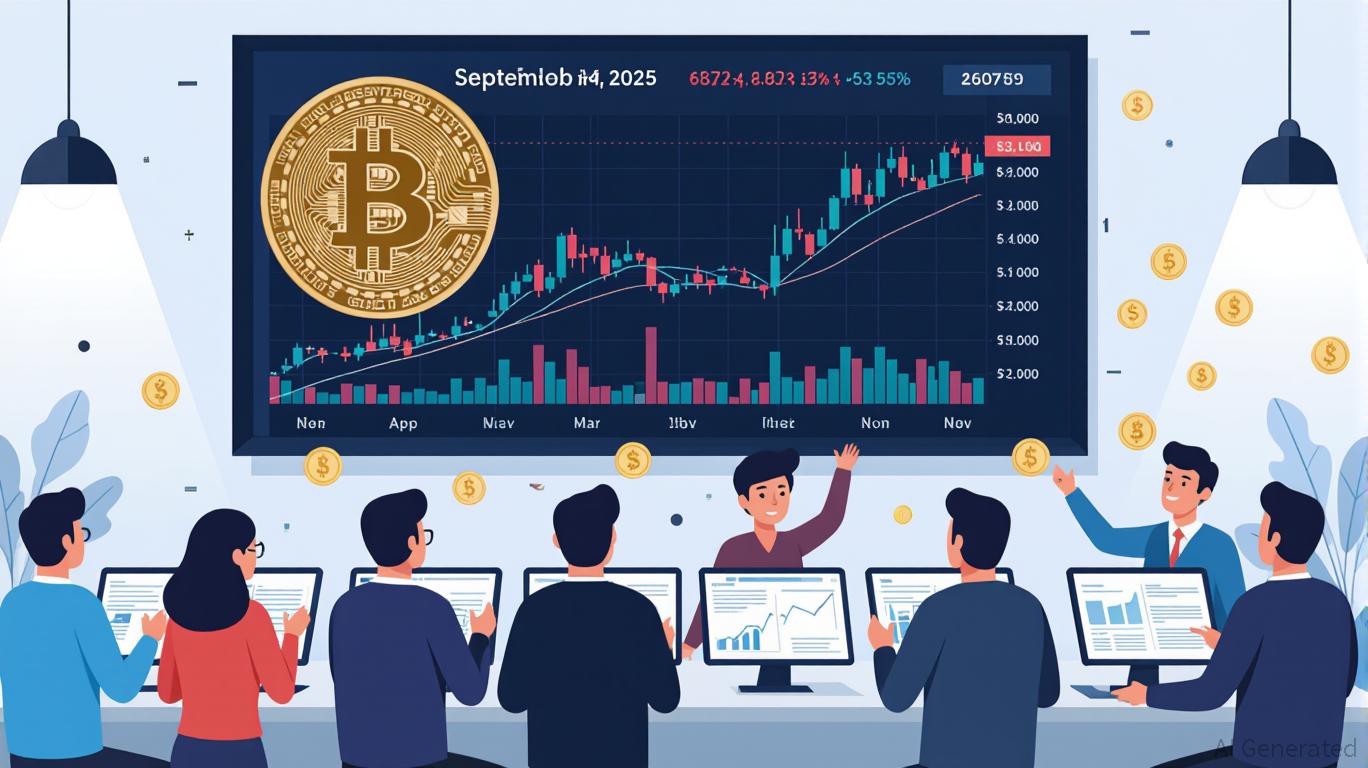Zcash Halving Event: Deflationary Dynamics and the Evolution of Cryptocurrency Valuation Approaches
- Zcash's 2024 halving reduced block rewards by 50%, triggering deflationary dynamics and reshaping market perceptions through Bitcoin-like scarcity models. - Privacy features (27% shielded transactions) and institutional adoption (Grayscale Zcash Trust) amplified Zcash's appeal amid 92% price gains post-halving. - 2025 PoS transition stabilized mining economics but risks miner consolidation as block rewards halve again to 0.78125 ZEC per block. - Zcash exhibited counter-cyclical price surges (750% in late
Deflationary Dynamics and Value from Scarcity
Zcash’s system reduces block rewards every 1,680,000 blocks, or about every four years, to control inflation and simulate the rarity of limited resources. The halving in November 2024 lowered block rewards from 3.125
Zcash’s deflationary appeal is further strengthened by its privacy options. Shielded transactions, which use zk-SNARKs to hide transaction details, made up 27% of all transactions in 2025, according to Bitget. This combination of limited supply and privacy has drawn a distinct group of investors, including institutions like Grayscale, which introduced a $137 million Zcash Trust in 2025, Bitget noted.

Mining Profitability and Network Stability
The halving has a dual effect on mining: it forces miners to adjust to smaller rewards, which may push some to depend more on transaction fees or leave the network altogether. Additionally, Zcash’s move to a proof-of-stake (PoS) system in 2025 has helped stabilize hash rate fluctuations, attracting larger institutional miners looking for eco-friendly blockchain options, Bitget reported. This transition has made the network more secure and reduced energy use, which is increasingly important as environmental standards tighten.
However, experts warn that the 2025 halving—which will cut block rewards to 0.78125 ZEC—could challenge miners’ ability to stay profitable. “The upcoming reduction will likely speed up the consolidation of mining pools,” one analyst observed, pointing out that smaller miners might find it hard to survive, according to Coinpedia. Still, the Electric Coin Company’s roadmap, which emphasizes privacy upgrades and DeFi integration, aims to counteract this by increasing transaction activity, Bitget reported.
Market Trends and Price Outlook
Zcash’s price movement after halvings has been unpredictable. Following the 2024 halving, ZEC climbed 92% by the end of 2025, but price swings continued. In late 2025, ZEC soared 750% from under $50 to $400 as Bitcoin’s price dropped and investors turned to privacy coins, Bitget reported. By early 2026, ZEC briefly surpassed $600—a seven-year peak—driven by retail enthusiasm and new institutional investment products, according to Coinpedia.
Technical analysts point to a “counter-cyclical” trend between Zcash and
Challenges and Regulatory Risks
Despite its
Additionally, not everyone is convinced by Zcash’s deflationary approach. Critics argue that simply reducing supply does not ensure price growth if demand fails to keep up. “Scarcity is a story, not a certainty,” one economist remarked, stressing that real-world use and adoption are key to maintaining value, according to Coinpedia.
Conclusion: Deflationary Strategy in a Changing Market
Zcash’s halving events highlight the increasing role of deflationary models in shaping cryptocurrency values. By merging Bitcoin’s scarcity principle with advanced privacy features, Zcash has established itself in a market that is more focused than ever on utility and compliance. For investors, the 2025 halving offers both promise and warning: while lower issuance could support long-term value, Zcash’s future will ultimately depend on how it navigates regulatory, technological, and market challenges.
As the next halving nears, attention will turn to whether Zcash can sustain its growth in a competitive crypto environment—and if its deflationary structure will continue to support its high valuation.
Disclaimer: The content of this article solely reflects the author's opinion and does not represent the platform in any capacity. This article is not intended to serve as a reference for making investment decisions.
You may also like
Trump’s Wall Street Fundraiser Sparks Renewed Debate Over Deregulation and Regulatory Oversight Following Trade Finance Crisis
- Trump dined with Wall Street leaders amid First Brands' $3B trade finance collapse, exposing non-bank lending risks and triggering calls for stricter oversight. - Jefferies faces scrutiny over $3B in tied debt as its stock fell 19%, while JPMorgan's Dimon warned of systemic gaps in non-bank lending oversight. - Trump's 50-year mortgage proposal sparked debate, with critics fearing "debt for life," while a 42-day government shutdown worsened market uncertainty. - The administration's deregulatory agenda c
Digital Identity, No Data Required: ZK Protocol Secures $9M to Champion a Privacy-Centric Tomorrow
- Self Labs raised $9M in seed funding led by Greenfield Capital and SoftBank, with participation from Web3 leaders like Sreeram Kannan and Sandeep Nailwal. - The ZK-based platform enables privacy-preserving identity verification using zero-knowledge proofs and supports 129 countries' biometric passports and India's Aadhaar system. - A points-based rewards program incentivizes on-chain verification, while integrations with Google, Aave , and Velodrome expand use cases like token distribution and age checks

Bitcoin’s Sharp Decline: Is This a Healthy Correction or an Ominous Signal?
- Bitcoin fell 10.5% in November 2025 amid a $19B derivatives crash, driven by Fed policy uncertainty and U.S.-China trade tensions. - Regulatory shifts and leveraged liquidations (1.6M traders impacted) exposed vulnerabilities in crypto's derivatives-heavy market structure. - Institutional demand persisted (e.g., JPMorgan's 64% ETF stake increase), suggesting long-term adoption despite short-term volatility. - Derivatives recovery may lag until 2026, hinging on Fed rate clarity and inflation trends, with

Bitcoin Leverage Liquidation Spike: Systemic Threats in Crypto Derivatives During Q4 2025 Market Turbulence
- Q4 2025 crypto derivatives saw $20B in liquidations as Bitcoin fell below $100,000, exposing systemic risks from extreme leverage (up to 1,001:1) and interconnected markets. - Platforms like Hyperliquid and Binance faced $500M+ losses in 24 hours due to cascading margin calls, with 78% of perpetual futures volume amplifying volatility through feedback loops. - Regulators scramble to address risks as unregulated leverage, macroeconomic pressures, and geopolitical tensions (e.g., U.S.-China trade wars) inc
